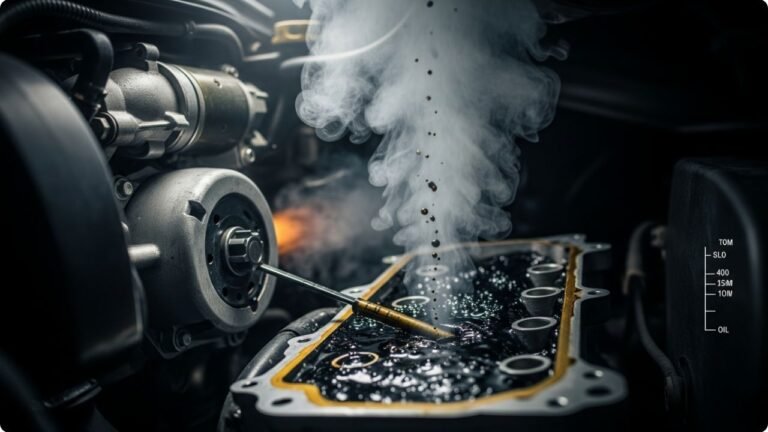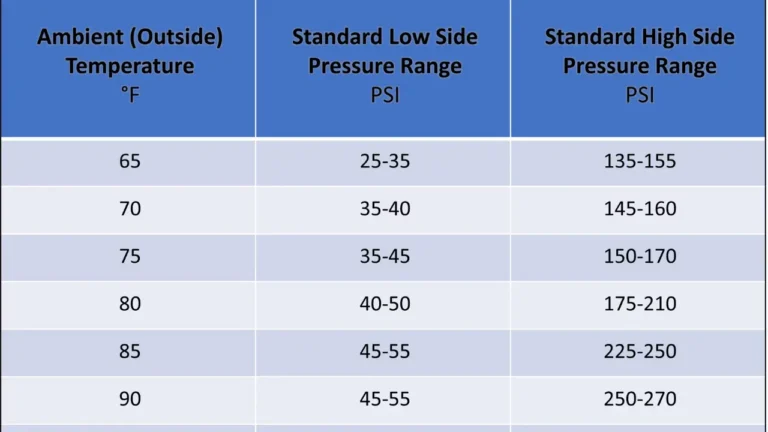How Often Should You Change Transmission Fluid: Honda Civic Maintenance Guide

Knowing how often should you change transmission fluid in a Honda Civic feels a lot like knowing when to water a plant. Too early and it doesn’t hurt, too late and things begin to wilt. Your car may not grow leaves, but it does show signs when something is off. Many Honda Civic owners wait until a problem appears, and by then the transmission might already be stressed. This guide helps you understand the right timing so you can avoid expensive issues. I’ll explain the signs, the intervals, and what affects them. Think of this as simple advice from a friend who has spent a lot of time working around cars and learning what keeps them healthy.
When you keep your transmission fluid fresh, your Honda Civic shifts better and runs cooler. The drive feels smooth, the engine stays relaxed, and you avoid problems that sneak up later. Many drivers overlook this fluid because it’s out of sight. But the truth is, it works harder than you think. By the end of this guide, you’ll feel more confident about when to check and change it. You’ll also learn what habits can help you avoid trouble. My goal is to make this simple, easy, and clear, with helpful tips that match real-life driving.
Why Transmission Fluid Matters in a Honda Civic
Transmission fluid plays a big role in how your Honda Civic behaves on the road. It helps the gears move without friction, keeps temperatures steady, and supports smooth shifts. When this fluid starts to break down, the transmission gets stressed. That stress can turn into bigger problems, much like running a marathon without water. You keep going, but you feel the pressure rising with each mile. Your car feels that too when the fluid becomes dirty or thin.
Fresh fluid lets the transmission move with ease. You feel cleaner shifts, quicker responses, and cooler operation. Neglected fluid, on the other hand, causes slow engagement and harsh shifting. If you have ever pressed the gas and felt a pause before the car moved, you know that uneasy feeling. That pause is often the transmission crying for help. A simple fluid change can prevent that and keep your Civic ready for the road.
Recommended Interval: How Often Should You Change Transmission Fluid
Honda recommends changing the transmission fluid every 30,000 to 60,000 miles. That range depends on how you drive and the type of transmission your Civic has. This interval is your baseline. It helps you avoid early wear and keeps the transmission performing at its best. Think of it like changing your shoes before they’re worn down to the threads. You change them before the damage happens.
Many drivers try to push past the suggested interval, but that is risky. The fluid loses its strength over time due to heat, friction, and contaminants. When this happens, even normal city driving can strain the transmission. If you want your Honda Civic to last, stay within the recommended range. You can also check your owner’s manual for model-specific guidance. Some years and models vary slightly, but the range stays close.
A helpful tip is to make a quick note on your phone after each fluid change. When your next change approaches, you’ll get a reminder. Simple habits like this save you from forgetting, especially when life gets busy.
Factors That Change the Fluid Change Interval
The interval for how often should you change transmission fluid depends on more than mileage. It also depends on how you use your car. Here are some factors that can shorten or extend the time between changes. These are simple to understand and help you make better decisions for your Civic.
Heavy Traffic Driving
If you spend a lot of time in stop-and-go traffic, your transmission works harder. Every stop and start creates heat. Heat breaks down fluid faster. Even short daily trips can increase wear if you do them often. In this case, aim for the lower end of the 30,000-mile range.
Frequent Highway Driving
Highway driving creates less strain on the transmission. The gears stay steady and the engine runs at stable speeds. This means the fluid ages slower. If most of your miles come from long highway drives, you may stay closer to the 60,000-mile mark.
Towing or Heavy Loads
A Honda Civic isn’t known for towing, but some drivers carry heavy cargo. Extra weight forces the transmission to push harder. That heat and pressure break down the fluid faster. If you haul often, shorten your interval.
Transmission Type
Manual, automatic, and CVT transmissions all behave differently. Manual transmissions usually need fewer changes. Automatic transmissions need more because they deal with heat and pressure. CVTs are sensitive and require fresh fluid to keep the belt and pulleys working right. This is why Honda gives specific guidelines for each type.
Table: Factors That Affect the Interval
Below is a simple table to help you compare factors that affect fluid change timing.
| Factor | How It Affects the Interval | Suggested Adjustment |
|---|---|---|
| Heavy Traffic | More heat, faster breakdown | Change sooner |
| Highway Driving | Less stress, slower breakdown | Change later |
| Heavy Loads | Higher pressure on transmission | Change sooner |
| CVT Transmission | More sensitive system | Follow lowest recommended interval |
This table makes it clear that the way you use your Civic matters as much as the mileage. Small habits add up. When you keep these in mind, you can adjust the timing and avoid problems later.
Common Symptoms of Bad or Old Transmission Fluid
One way to know how often should you change transmission fluid is by watching for early signs of trouble. Your car talks to you through small hints, much like a friend giving you quiet signals when they need something. These symptoms are easy to notice once you know them.
Slipping Gears
If your engine revs but your car doesn’t move right away, that is a sign of fluid problems. This happens when the fluid can’t create enough pressure. It’s a clear warning that the fluid is old or low.
Hard or Rough Shifting
If you feel a strong jerk when shifting, the fluid might be contaminated. Dirty fluid loses its smoothness. You may feel vibration or delay during gear changes. This feels unsettling and can cause long-term damage if ignored.
Unusual Sounds
A healthy Civic transmission runs quietly. Grinding or whining means the fluid is struggling to protect the gears. These sounds often come before bigger issues, so listen closely.
Overheating
Transmission overheating is a dangerous problem. If you smell something burning or see smoke, pull over. Old fluid can’t keep temperatures under control. This can lead to full transmission failure. A simple fluid change prevents most overheating cases.
Why Ignoring Fluid Changes Costs More in the Long Run
Skipping fluid changes may seem harmless at first, but it becomes expensive later. Think of the fluid as sunscreen for your transmission. Skip it, and the burn shows up in time. Repairing or replacing a Honda Civic transmission costs far more than routine maintenance. Many drivers do not realize how fast small issues grow.
Dirty fluid creates friction. Friction creates heat. Heat creates wear. That cycle continues until something breaks. At that point, even a simple drive can turn stressful. The transmission may slip, jerk, or stop responding. That is not only unsafe but also costly. A little preventive care saves you money and keeps your car steady.
Regular changes help your Civic last longer. Cars with proper fluid care often reach high mileage without major transmission issues. The secret is simple: stay ahead of the damage, not behind it.
Preparing for a Transmission Fluid Change
If you want to change the fluid yourself, collect the basic tools first. This keeps the process clean and smooth. It also reduces mistakes. You don’t need advanced training, only patience and preparation.
You Will Need:
-
Drain pan
-
Funnel
-
Torque wrench
-
Correct Honda-approved transmission fluid
-
Gloves
-
Clean rags
These tools make the job easier and safer. You want to avoid spills because old fluid is messy and harmful to the environment. A funnel helps you pour the new fluid without wasting any. A torque wrench ensures the drain plug is sealed just right. When you use the right tools, the job feels simple.
Why Using the Correct Fluid Matters
Honda Civics require specific transmission fluid designed for their system. It is tempting to buy cheap alternatives, but that creates risk. Wrong fluid can harm seals, create rough shifts, or even stop the transmission from working. Honda fluid is designed to flow at the right thickness, even under heat. This helps the transmission stay cool and smooth.
I’ve seen many cases where people used generic fluid and ended up with expensive repairs. Saving a few dollars at the start cost much more later. Stick with Honda-approved fluid. It protects your transmission and keeps your Civic running the way it should.
Step-By-Step Guide to Changing Transmission Fluid
Changing transmission fluid in your Honda Civic doesn’t have to feel intimidating. With patience and proper preparation, it’s manageable even for beginners. Here’s a simple step-by-step approach:
-
Park on Level Ground: Safety first. Use wheel chocks to prevent movement.
-
Drain the Old Fluid: Place your drain pan under the transmission and remove the drain plug. Let the fluid fully drain.
-
Inspect the Old Fluid: Look for discoloration or debris. Dark brown or burnt-smelling fluid indicates neglect.
-
Replace the Drain Plug: Tighten it to the torque specifications recommended by Honda.
-
Refill with Fresh Fluid: Use the funnel to add the exact type and amount of fluid. Avoid overfilling.
-
Check Fluid Level: Start the engine, let it run for a few minutes, then recheck levels. Adjust if necessary.
-
Dispose of Old Fluid Properly: Take it to a recycling center or automotive store. Never pour it down drains or on the ground.
Following this method ensures your Civic’s transmission fluid stays clean, protecting your gears and extending the life of the transmission.
Maintenance Schedule for Honda Civic Transmission Fluid
Honda provides clear recommendations for how often should you change transmission fluid based on mileage and time. Following these guidelines keeps your Civic performing smoothly:
-
30,000 miles / 2 years: First recommended change. Ideal for most drivers.
-
60,000 miles / 4 years: Second change to prolong transmission life.
-
90,000 miles / 6 years: Third change to maintain optimal performance.
-
120,000 miles / 8 years: Fourth change to ensure continued reliability.
This regular schedule prevents fluid breakdown, reduces wear on internal parts, and keeps your Civic shifting smoothly. Adjust intervals if you drive under heavy loads or stop-and-go traffic frequently.
Additional Tips for Transmission Fluid Maintenance
Maintaining transmission fluid involves more than just changing it. Here are some practical tips:
-
Regularly Check Fluid Levels: Use the dipstick to monitor levels. Low fluid can cause slipping or overheating.
-
Understand Flush vs. Change: A flush removes all fluid; a change only replaces a portion. Follow manufacturer recommendations or consult a certified service center.
-
Listen to Your Car: Strange noises or rough shifting are early warning signs of fluid issues.
-
Use Certified Service Centers: Professionals know your Honda Civic’s specifications, preventing mistakes that can be costly.
By combining regular inspections with scheduled fluid changes, you can maximize transmission life and avoid emergencies on the road.
Other Honda Civic Maintenance Essentials
Transmission care is important, but your Civic’s longevity depends on several interconnected maintenance tasks. Treating your car holistically ensures reliability and safety:
-
Oil Changes: Change every 5,000–7,500 miles to reduce engine wear.
-
Brake Fluid Replacement: Replace every 2 years for consistent braking performance.
-
Coolant Flush: Every 60,000–100,000 miles to prevent engine overheating.
-
Tire Rotation: Every 5,000–7,500 miles for even tire wear and better handling.
Neglecting any of these can indirectly affect your transmission. For example, an overheated engine may increase transmission temperatures, causing fluid breakdown sooner. Keeping up with all maintenance tasks ensures your Civic runs efficiently.
Common FAQs About Honda Civic Transmission Fluid
1. Can I drive with low transmission fluid?
Driving with low fluid is risky. It can cause slipping, overheating, and permanent damage. Always check levels before long trips.
2. Can I just top off old fluid?
Topping off temporarily helps, but it doesn’t replace worn or contaminated fluid. Regular changes are necessary for proper protection.
3. Is DIY fluid change safe for a Honda Civic?
Yes, if you follow proper steps and use Honda-approved fluid. Ensure safety measures like wheel chocks and a level surface.
4. How do I know if my Civic has CVT or automatic transmission?
Check your owner’s manual or transmission badge. CVTs are more sensitive and require strict adherence to fluid guidelines.
5. Can I use aftermarket fluid instead of Honda’s?
It’s best to stick with Honda-recommended fluids. Aftermarket alternatives may not meet specifications, risking damage.
6. What happens if I wait too long to change fluid?
Delayed changes can lead to gear slipping, overheating, rough shifting, and eventually complete transmission failure.
7. How often should I inspect transmission fluid?
Inspect at least every 15,000 miles or during regular oil changes. Look for color, consistency, and level.
8. Is a transmission flush better than a fluid change?
Flushes fully remove old fluid and contaminants, ideal for heavily used or older vehicles. Regular changes suffice for most Civics.
Signs You’re Overdue for a Transmission Fluid Change
Even if you follow a schedule, your Honda Civic may show early signs of fluid issues:
-
Delayed acceleration or gear engagement
-
Harsh or jerky shifts
-
Grinding or whining noises
-
Burning smell or transmission overheating
Ignoring these symptoms can turn minor maintenance into costly repairs. Timely fluid changes prevent these problems and maintain your Civic’s smooth performance.
The Long-Term Benefits of Regular Transmission Fluid Changes
Regular transmission fluid maintenance has far-reaching benefits:
-
Smooth Gear Shifts: Prevents jerking or slipping, giving a more comfortable ride.
-
Reduced Heat and Wear: Proper lubrication keeps gears cool and prevents premature wear.
-
Extended Transmission Life: Routine maintenance can extend the life of your Civic’s transmission by tens of thousands of miles.
-
Cost Savings: Avoid expensive repairs that often result from neglected fluid.
By keeping fluid fresh, you protect one of the most critical systems in your car and ensure peace of mind while driving.
Conclusion
Understanding how often should you change transmission fluid is one of the smartest things you can do for your Honda Civic. It’s not just a maintenance task—it’s an investment in smooth driving, reliability, and long-term savings. Following manufacturer recommendations, watching for symptoms, and using the correct fluid all contribute to a longer-lasting, healthier transmission.
Think of it like caring for a close friend. A little attention now prevents serious problems later. By staying proactive with transmission fluid changes, you’ll enjoy smoother drives, fewer surprises, and a Honda Civic that remains dependable for years to come.





